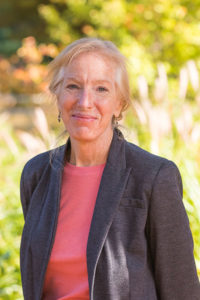 Welcome to PCIA’s Teacher Feature blog series! Each month, we’re getting to know one of our teachers a little bit better, both professionally and personally.
Welcome to PCIA’s Teacher Feature blog series! Each month, we’re getting to know one of our teachers a little bit better, both professionally and personally.
Teacher: Ms. Erika Kingston-Doring
Pronouns: She/her
Subject: Visual Arts
Lives in: Hood River, Ore.
What do you enjoy most about being a teacher?
As a teacher, I most enjoy being a facilitator of new experiences for students leading to growth. What inspires me is seeing growth not only in the students but also in myself through the duration of a course. We start a course with planned learning goals, yet what occurs in the duration of a class is so much more, much of which cannot be easily predicted. It’s those unexpected challenges and surprises that stretch us, where growth happens, making learning and teaching fulfilling.
What is one of your hidden talents?
There are things I enjoy more than others, and had opportunities to develop starting at a young age. I began painting with my grandfather when I was seven years old, and benefited from a numerous art programs in the public schools I attended. Growing up in the suburbs of Washington, D.C., gave me easy access to the Smithsonian and numerous other museums. Visual Art provided me the needed stepping stone to college, yet my goal was to work with youth and adults with disabilities. I continued my education to obtain a masters in Rehabilitation Counseling. My most valued experiences was in working with AIDS organizations across the country establishing supports for people surviving AIDS to return to careers.
How does technology make teaching more simple or difficult?
I find it useful to think of technology as investing in a well equipped workshop. I can have an extensive choice of hand tools alongside a few complex power tools. I learn how to choose the right tool for the job. A simple hand tool may often do the trick and feel satisfying. Yet effectively utilizing a newer power tool may open up new possibilities and a means of access to create something new. Integrating and using a well chosen, new technology expands input, as well as what we can do together in the classroom and as individuals.
If you could take your students on a field trip to anywhere in the world, where would you take them?
I wish I could take every student on an underwater expedition. We would go snorkeling in the Rainbow River and Crystal Springs of North and Central Florida. I often say to students, “ I don’t teach drawing, I teach seeing.” Snorkeling, observing nature, and being open to the uncomfortable elements,opened up all of my senses. It allowed me to experience a world I could not perceive before, and to be aware of how much capacity we have to see and experience through our senses that goes unused. I’ve taken youth to these places, to learn about our ecosystems and watched how it changed them. Visual Arts is, after all, about expanding awareness through our senses and sharing one’s individual perceptions using their creative process.
What’s the best advice you’ve been given about teaching?
“It takes three years.” Now, having been with PCIA for three years, I see how far we have come to establish a studio art environment, encouraging students of all abilities. Visual art and the creative process is a key component to STEM and the design process, regardless of what vocation one finds themselves in. It does not require talent, it’s a tool for everyone. It expands the capacity to communicate, creatively problem solve, and innovate solutions.
Check back soon for a new PCIA Teacher Feature! And, as always, you can see a list of our current staff here.
